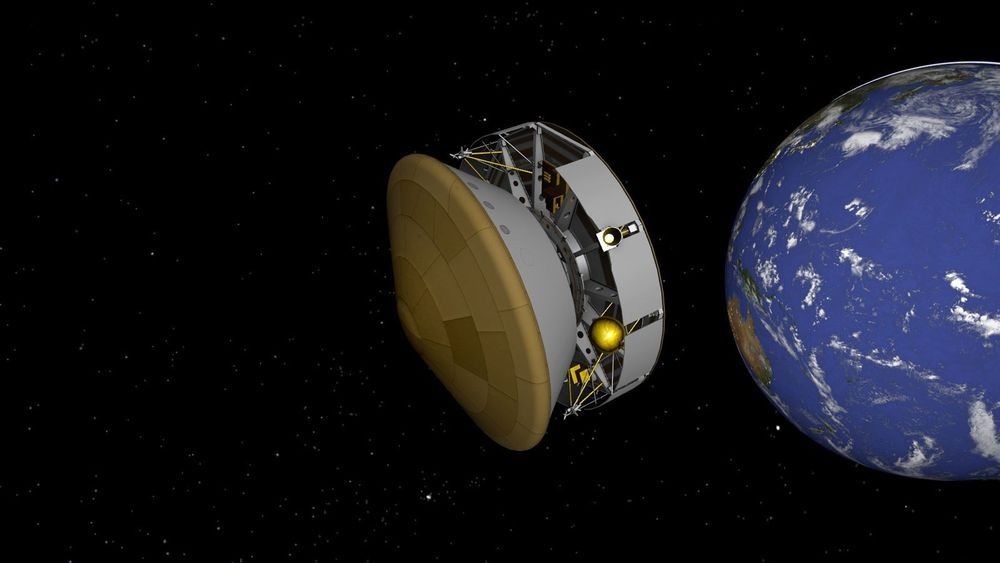A new system called GPT-3 is shocking experts with its ability to use and understand language as well as human beings do.
Page 7430
Aug 23, 2020
Facebook is training robot assistants to hear as well as see
Posted by Genevieve Klien in categories: information science, robotics/AI, virtual reality
In June 2019, Facebook’s AI lab, FAIR, released AI Habitat, a new simulation platform for training AI agents. It allowed agents to explore various realistic virtual environments, like a furnished apartment or cubicle-filled office. The AI could then be ported into a robot, which would gain the smarts to navigate through the real world without crashing.
In the year since, FAIR has rapidly pushed the boundaries of its work on “embodied AI.” In a blog post today, the lab has announced three additional milestones reached: two new algorithms that allow an agent to quickly create and remember a map of the spaces it navigates, and the addition of sound on the platform to train the agents to hear.
Aug 23, 2020
Tesla’s (TSLA) $2k value could be looked at as “low priced,” investor says
Posted by Genevieve Klien in categories: climatology, economics
Tesla (NASDAQ: TSLA) has reached the $2,000 a share price point, but one investor says that its value could be looked at as “fairly low priced” in a year or two.
It’s hard to imagine that $2,000 for a share of an automaker’s stock could look like a bargain in the current economic climate. However, the CEO of AdvisorShares, Noah Hamman, thinks that TSLA’s price now could very well be looked at as a steal in a year or two.
“It’s possible a year or two from now we think that $2,000 a share was still fairly low priced, but who knows,” Hamman said to The First Trade, which is Yahoo Finance’s opening bell show.
Aug 23, 2020
Mystery gas discovered near center of Milky Way
Posted by Shailesh Prasad in categories: futurism, space
An international team of researchers have discovered a dense, cold gas that’s been shot out from the center of the Milky Way “like bullets”.
Exactly how the gas has been ejected is still a mystery, but the research team, including Professor Naomi McClure-Griffiths from The Australian National University (ANU), say their findings could have important implications for the future of our galaxy.
“Galaxies can be really good at shooting themselves in the foot,” Professor McClure-Griffiths said.
Aug 23, 2020
Astronomers bounced a laser off a spacecraft whirling around the moon
Posted by Shailesh Prasad in category: space
Astronomers have bounced lasers of mirrors left by Apollo astronauts on the lunar surface for decades. But this is the first time bouncing one off a lunar orbiter — after a decade of trying.
Aug 23, 2020
What people in 1900 thought life would be like in the technological paradise of 2000
Posted by Shailesh Prasad in category: futurism
Aug 23, 2020
FBI and CISA warn of major wave of phishing attacks targeting teleworkers
Posted by Saúl Morales Rodriguéz in category: cybercrime/malcode

Hackers are calling employees working from home and tricking them into accessing phishing pages for corporate domains.
Aug 23, 2020
Follow me on my journey to Mars with NASA’s Eyes on the Solar System
Posted by Alberto Lao in categories: internet, space
The web app provides you with the precise location of my whereabouts in real-time, using real data. I’m learning space is a big place and I’m delighted to have you see how my team and I navigate it. http://go.nasa.gov/2YmfBz5
Aug 23, 2020
How You Speak Reflects Who You Are: The Way We Talk Both Unites and Divides Us
Posted by Genevieve Klien in category: futurism
In new book, Prof. Katherine D. Kinzler argues that how you speak reflects who you are.
Have you ever considered that the way you talk may determine who you’re friends with, the job you have, and how you see the world? Even if you don’t realize it, “how you speak is, in a very real way, a window into who you are and how other people see you.”
Aug 23, 2020
Stanford Scientists Slow Light Down and Steer It With Resonant Nanoantennas
Posted by Genevieve Klien in categories: augmented reality, biotech/medical, computing, internet, nanotechnology, quantum physics, virtual reality
Researchers have fashioned ultrathin silicon nanoantennas that trap and redirect light, for applications in quantum computing, LIDAR and even the detection of viruses.
Light is notoriously fast. Its speed is crucial for rapid information exchange, but as light zips through materials, its chances of interacting and exciting atoms and molecules can become very small. If scientists can put the brakes on light particles, or photons, it would open the door to a host of new technology applications.
Now, in a paper published on August 17, 2020, in Nature Nanotechnology, Stanford scientists demonstrate a new approach to slow light significantly, much like an echo chamber holds onto sound, and to direct it at will. Researchers in the lab of Jennifer Dionne, associate professor of materials science and engineering at Stanford, structured ultrathin silicon chips into nanoscale bars to resonantly trap light and then release or redirect it later. These “high-quality-factor” or “high-Q” resonators could lead to novel ways of manipulating and using light, including new applications for quantum computing, virtual reality and augmented reality; light-based WiFi; and even the detection of viruses like SARS-CoV-2.
















